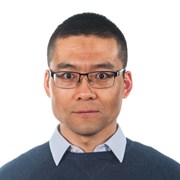In recent years, the exploration of oil and gas moves to deep water (> 300 m) and ultra-deep water (> 1500 m). There is big challenges and uncertainties for deep water risers and pipelines due to harsh environmental conditions, especially vortex-induced vibrations (VIV). - Full scale VIV model testing is required to understand the VIV under such conditions and it is an effective way to design and validate VIV mitigation devices. It can also give improved hydrodynamic coefficients which will be used as input to VIV prediction tools, says senior advisor Halvor Lie.
The new VIV test rig is to be used in the towing tank laboratory at Tyholt, Trondheim. It can accommodate a horizontal riser model with the length of 8 m. The diameter of the riser model can be varied from 0.5 m to 1.2 m, which is the diameter of a typical riser in full scale. The rig will be towed by the overhead towing carriage, to simulate uniform current. The test rig could be restricted to move to perform stationary towing tests. It can also be set up with springs, to perform free oscillation tests. Hydraulic system will be used to carry out forced motion VIV tests.
The design of the new VIV test rig involves two departments of SINTEF Ocean. The design and manufacture of the rig is led by the sub-project manager Thomas Bremset from Dept. of Ship and Marine structures. At the same time, the rig is modelled numerically by the senior research scientist Guomin Ji from Dept. of Maritime and Offshore.
-With the new VIV test rig, we can test riser models with much larger length-to-diameter ratio. Meanwhile, we aim to test in full scale Reynolds number - between 1 million and 3 million. Such tests will give us better understanding of the VIV in high Reynolds numbers, and provide design basis for our clients, says research scientist Decao Yin.
The new VIV test rig will be first used in a commercial project led by research scientist Jie Wu in the first two weeks of April 2018.
The design and manufacture of the new VIV test rig is a part of 'Stor skala - Phase 2' project supported by NFR. This project involves Decao Yin, Jie Wu, Halvor Lie, Guomin Ji, Thomas Bremset and Henning Braaten from SINTEF Ocean.


